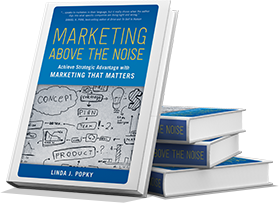An ATM Approach You Can Bank On
Author: Linda J. Popky
We’ve all been there: You need a little cash quickly and look for a nearby ATM. But wait, the ATM doesn’t belong to the bank where you have an account, so you are charged a convenience fee at the ATM, and then another fee by your bank for the privilege of getting your own money. Do you pay the fees, which combined can be as much as $3-4 per transaction, or do you drive around looking for your own bank’s ATM? And what if you’re traveling and your bank doesn’t have any ATMs in the vicinity?
The logic of this system has always escaped me. It’s my money – why do I need to pay a fee, sometimes twice, to get it? If I normally shop at Nordstrom’s, will Macy’s penalize me because I’m a Nordstrom’s customer? Highly unlikely. In fact, most industries would welcome the chance to serve me with open arms, hoping to entice me to patronize them more often.
We had enough of ATM fees. We recently moved our business and personal accounts to a small bank called First Republic, based on two factors: the personalized attention they give to their customers, and their policy of rebating other bank’s ATM fees.
What a sense of freedom to no longer search strip malls and downtown areas for a specific ATM network. What a great feeling to be able to go up to any ATM anywhere in the world and take out money, knowing there is no extra charge – even at those ATMs in gas stations and convenience stores that charge higher-than-usual fees. What a relief to not have to record all those $1.50 and $2 fees and deduct them from your checking account.
What First Republic and several other banks have realized is that the opportunity to build a more solid, long-term relationship with their customers can be worth much more to them in the long-term than those pesky little ATM fees. By removing an ongoing irritation from their customers, they differentiate themselves from the myriad of other banks out there and build customer satisfaction and loyalty. I suspect that their costs to use other banks’ ATMs are probably relatively small, compared to the cost of developing and running their own very-large ATM network, which they no longer need to do with this policy.
How does this relate to your business? Think about what other players in your industry are doing that aggravate their customers. How can you differentiate yourself by taking a different approach? What inconvenience or irritation can you remove from your customers’ lives that will make them think more positively of you, make you the preferred supplier, make them more likely to come back to you again and again in the future?
Interestingly, after a few months of banking with First Republic, I noticed that the ATM fees rebated each month were never more than $25 or $30. It’s not a huge amount of money, but it’s the principle of the matter as much as the principal of my bank balance. And, as the MasterCard commercials say, the freedom and peace of mind is priceless.
The Marketing Leverage Hall of Shame
This issue we start a new feature – the Marketing Leverage Hall of Shame/Fame, dedicated to those companies who go out of their way to differentiate their customers’ experiences, for better or for worse. We are continuously hearing stories of how companies treat their customers – most of these are horror stories, but as in the case of First Republic above, sometimes there are organizations that are remembered by their customers because they go above and beyond.
This issue’s suggestion comes from Linda’s husband, Mitch Finer, who is working on his second million miles flown with United Airlines. In spite of his relentless progress towards this milestone, Mitch is amazed at how poorly United flight attendants and ground crew often treat the airline’s best customers. Standard operating procedure appears to be treat everyone at the lowest possible level of service. Once the passengers are seated and the manifest is reviewed, the attendants then note who the top tier customers are and make an extra effort to treat them and only them a little better. The problem is that these are the same flight attendants who several minutes earlier treated the same highly valuable customers (and everyone else) like cargo. What’s wrong with this picture? Wouldn’t it make sense to instead treat ALL customers to start as if they are valuable to the airline, if not now then in the future? On top of that, top tier customers can be easily identified from the second they check in and offered extra service and support to give them an outstanding experience from start to finish.
Have a Hall of Shame/Fame tip? Send us your stories and anecdotes. Each issue we’ll publish one of the best. If we choose yours, you’ll receive a special Leverage2Market memento (and the fame of being highlighted here) as our gift. Email linda@leverage2market.com with your suggestion.




